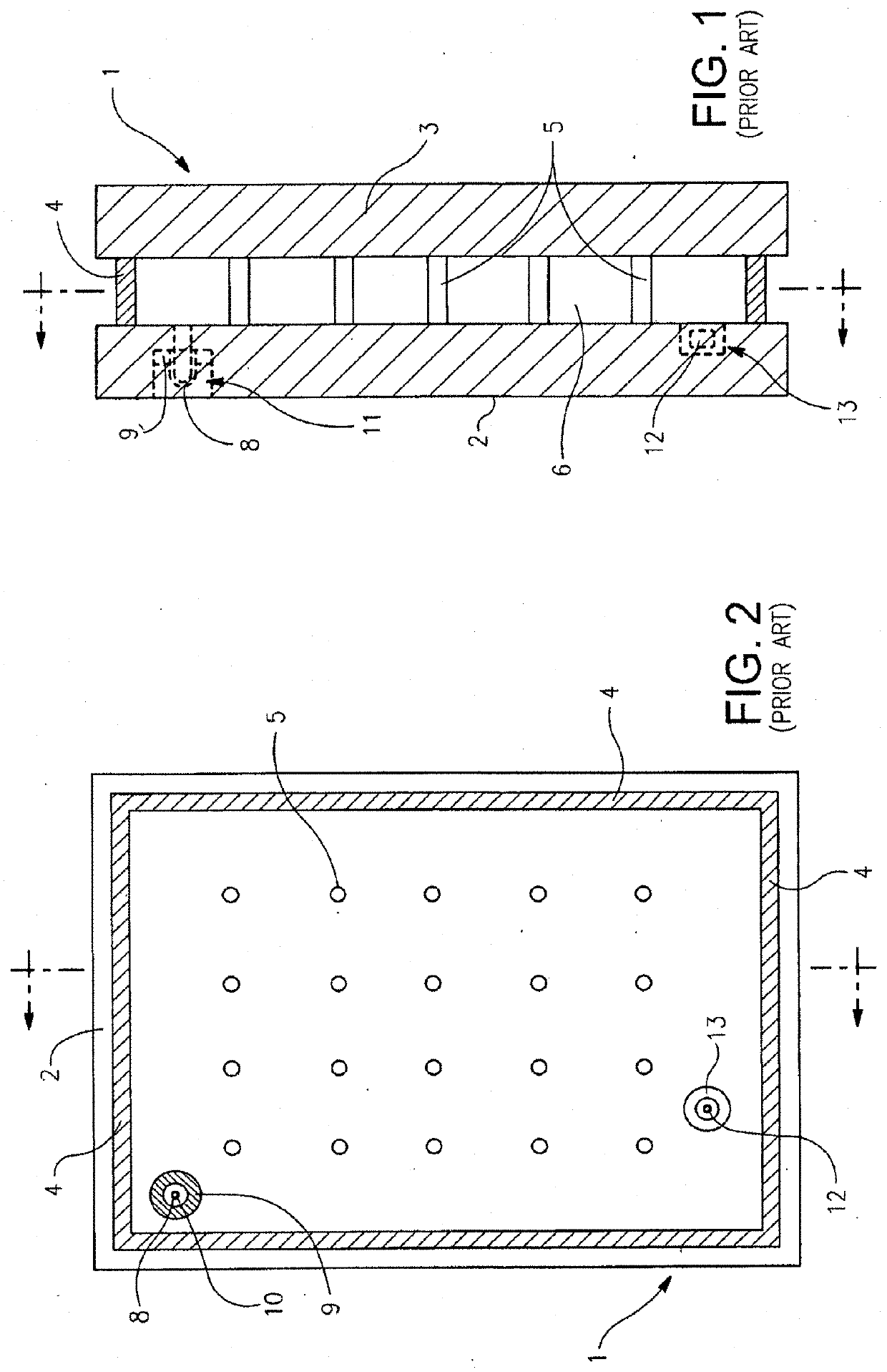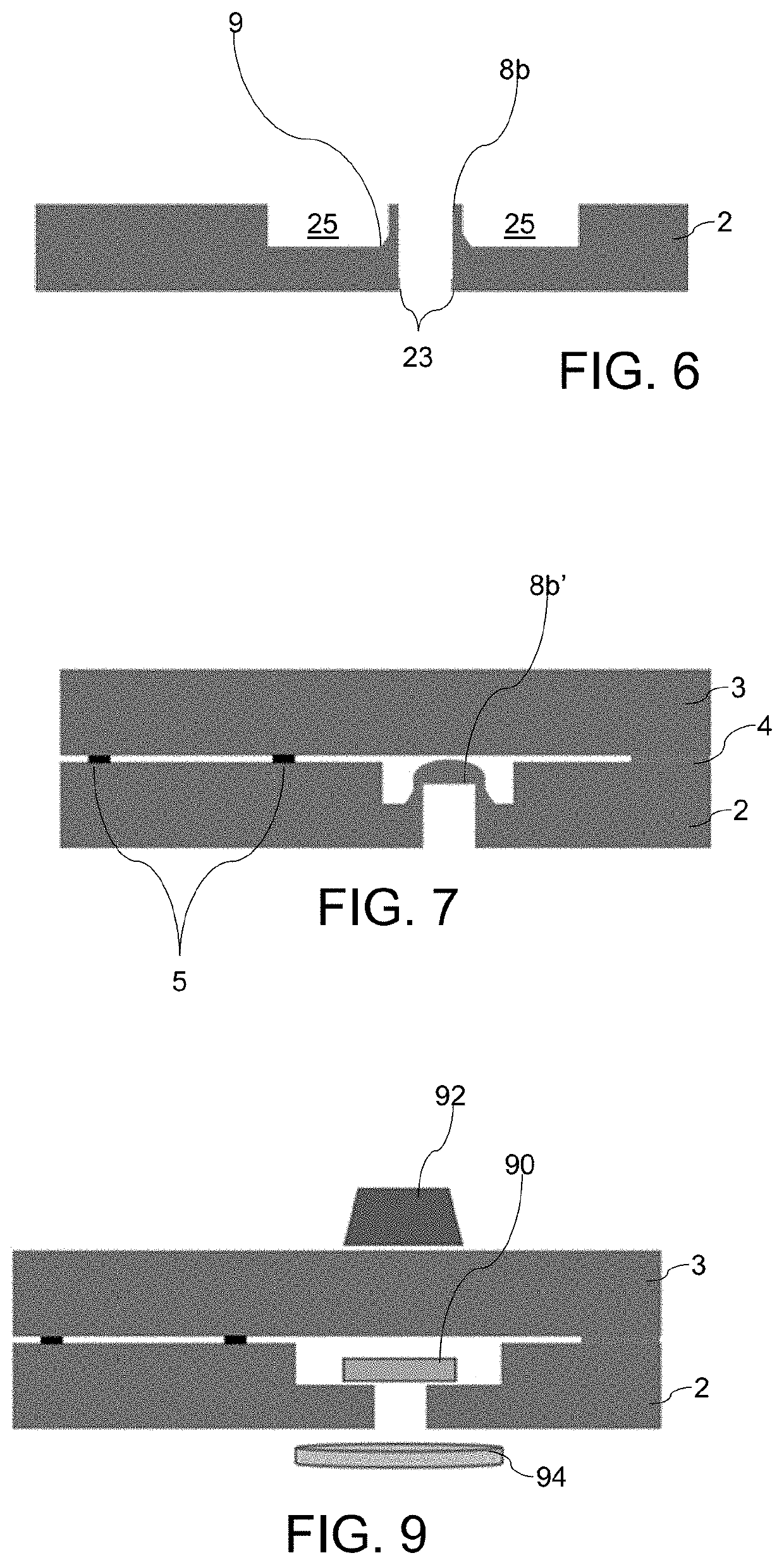Internal tube for vacuum insulated glass (VIG) unit evacuation and hermetic sealing, vig unit including internal tube, and associated methods
a technology of vacuum insulation glass and internal tubes, applied in the field of vacuum insulation glass (vig) units, can solve the problems of air leakage, difficult to properly seal the pump-out tube, and the pump-out tube may not be properly seated, so as to simplify the manufacturing process, shipping, handling, transportation and/or other processing operations, and the effect of less car
- Summary
- Abstract
- Description
- Claims
- Application Information
AI Technical Summary
Benefits of technology
Problems solved by technology
Method used
Image
Examples
Embodiment Construction
[0033]Certain example embodiments relate to improved techniques for evacuating vacuum insulated glass (VIG) units. More particularly, certain example embodiments of this invention relate to an internal pump-out tube for VIG unit evacuation and hermetic sealing, a VIG unit subassembly including an internal pump-out tube, a VIG unit made using an internal pump-out tube, and / or associated methods. Typically, the internal space of a VIG unit is evacuated through a surface mounted tube or other structure that facilitates sealing once the internal space reaches sufficiently low pressures. That tube or other structure protrudes from the surface even when sealed and typically is protected with a protective cap but nonetheless oftentimes requires special handling. Certain example embodiments improve upon this approach by relocating the sealing tube to within the VIG unit, thereby potentially eliminating the need for a protective cap and allowing for more freedom in handling, frame design, hy...
PUM
| Property | Measurement | Unit |
|---|---|---|
| pressure | aaaaa | aaaaa |
| diameter | aaaaa | aaaaa |
| diameter | aaaaa | aaaaa |
Abstract
Description
Claims
Application Information
 Login to View More
Login to View More - R&D
- Intellectual Property
- Life Sciences
- Materials
- Tech Scout
- Unparalleled Data Quality
- Higher Quality Content
- 60% Fewer Hallucinations
Browse by: Latest US Patents, China's latest patents, Technical Efficacy Thesaurus, Application Domain, Technology Topic, Popular Technical Reports.
© 2025 PatSnap. All rights reserved.Legal|Privacy policy|Modern Slavery Act Transparency Statement|Sitemap|About US| Contact US: help@patsnap.com



